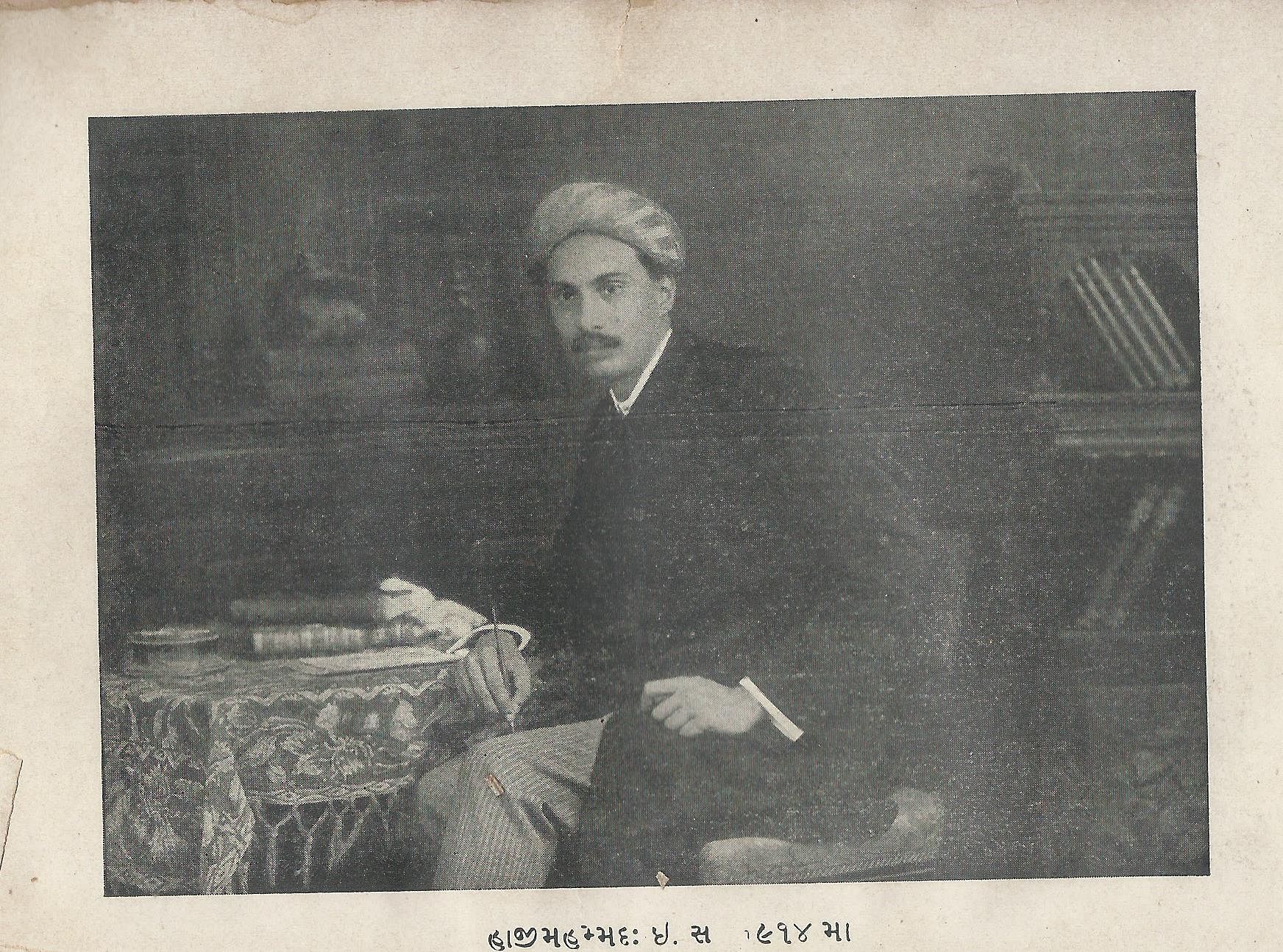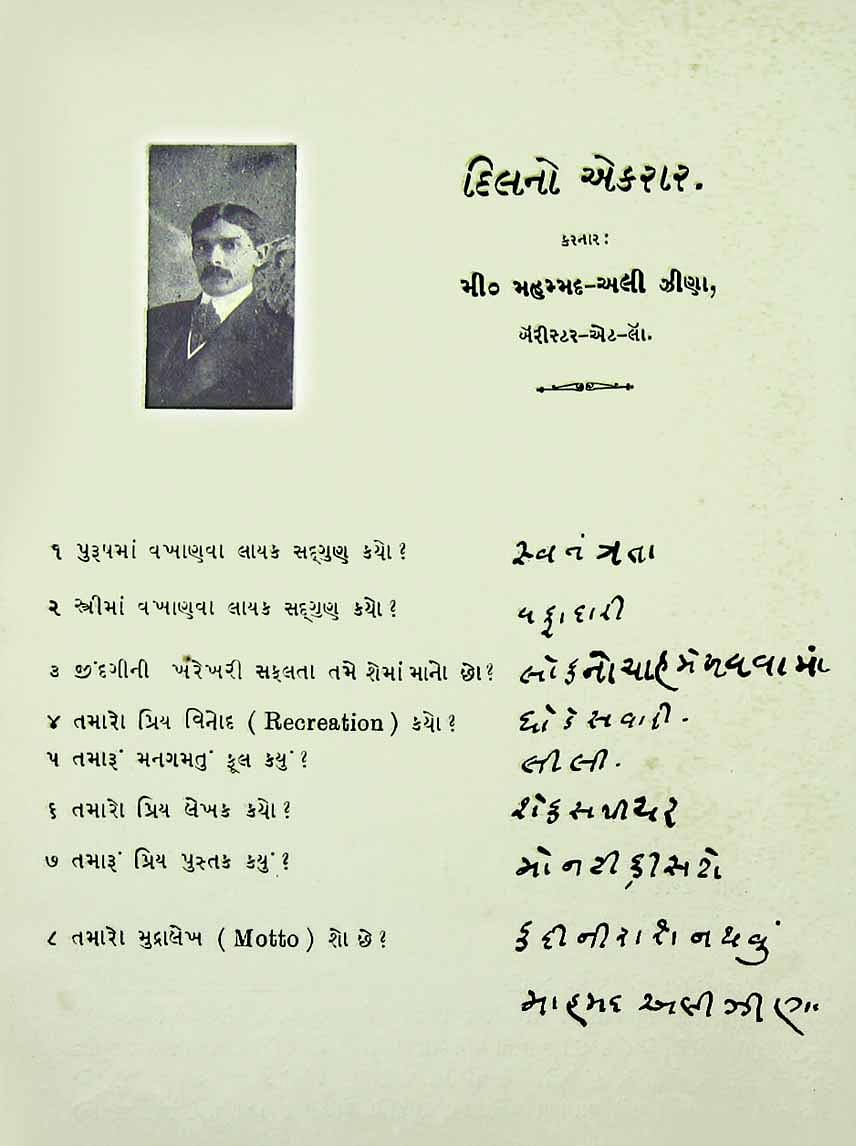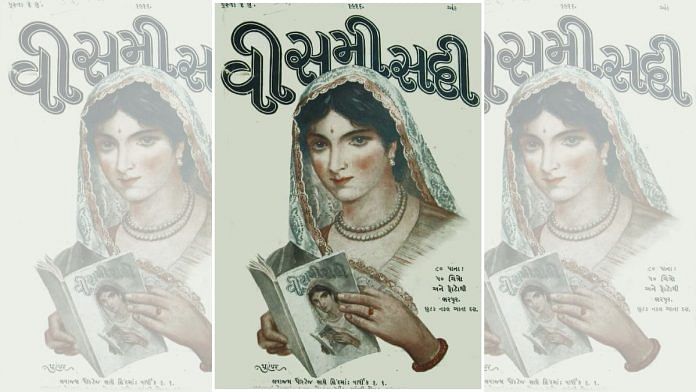Despite facing adverse conditions like the backdrop of World War I, challenges of technology, and sacrificing personal fortune, Haji Mohammed Allarakha Shivji pioneered pictorial journalism in Gujarati through his unique monthly publication Visami Sadi. The magazine became the platform for bold experiments. Its mix of content and visuals remains unparalleled, at least in some aspects. The magazine carried the only Gujarati handwritten article by Muhammed Ali Jinnah, who was, at the time, a secular leader and legal luminary of erstwhile Bombay. It appeared in an issue of Visami Sadi under the feature Dilno Ekrar or confession.
Haji was not interested in academic debates of a small group of litterateurs, he dreamed of bringing out a Gujarati monthly along the lines of The Strand Magazine and Pearson’s Magazine to broaden the perspective of Gujarati readers, according to artist and collaborator Ravishankar Raval’s biobraphy Gujarataman Kalana Pagaran.
While magazines like Gujarati and Suvaranmala did use photographs and illustrations, Haji conceived Visami Sadi as a visual-centric magazine, it would cover some of the important current events and features pictorially.
Visami Sadi was professedly not a high-brow literary magazine. In the first issue, there were articles on the new drug cocaine, and also a review of a drama with photographs by Jehangir Taraporevala. All the articles and poetry had sketches of the writer/poet on the top. Haji treated writers, photographers, and artists as celebrities and treated them with the utmost respect and generosity to secure exclusive material for the issues of Visami Sadi.
Also Read: Vivekananda shared a deep bond with Junagadh’s dewan, never forgot his ‘fatherly kindness’
Insistent on quality
Born in a rich merchant family in Bombay, originally from Kutch, Gujarat, Haji studied up to sixth grade and was not inclined to carry on the family business.

He translated Rubaiyat of Omar Khayyam, Pearls of Faith by Mathew Arnold into Gujarati and wrote a couple of stories. He also brought out a Muslim social magazine, Gulshan, but his dream was much bigger.
Drawing inspiration from the British magazine Nash’s, Haji roped in MV Dhurandhar, the famous artist and a teacher at JJ School of Arts, Bombay to draw the title of the first issue of Visami Sadi. It featured a woman reading a copy of the magazine.
Insistent on the quality of visuals, Haji sent the title drawing to England for printing. But World War I delayed the printing and delivery process. It also triggered an unsuitable financial environment to launch a leisurely magazine. Undaunted, Haji published the first issue of Visami Sadi in April 1916. Priced at ten annas, it had 80 pages with 50 photos and drawings.
In the mission statement of the first issue (Paheli Pichhan—The first introduction), Haji aspired to showcase the place of Hindustan and especially Gujarat in the twentieth century. Interestingly, he suggested that readers glance at previous centuries ‘like the pictures of cinematograph’, when cinema as a medium was just three years old and a largely unknown phenomenon in India.
One of his major intentions was to reduce the differences and quarrels among the writers of Parsi-Gujarati, Musalmani-Gujarati and Hindu-Gujarati styles of language—the three different schools of Gujarati writing at that time. He thanked Fazalbhoy Currimbhoy Ebrahim, a fellow Khoja businessman for suggesting the idea of such a magazine and extending help for the same.
Haji was a complete editor. He wrote for the magazine, at times with the pen name Salim, assigned various interesting subjects to appropriate persons including some Hindi writers whom he knew, briefed the artists for required drawings, got the blocks made, and stood with the compositor for layouts.
Also Read: Gujarati poet Krishnalal Shridharani’s thesis was ‘gospel’ for American civil rights activists
Innovative, costly ideas
To make Visami Sadi the most happening magazine, Haji came up with many innovative and costly ideas. One such idea was a column named Dilno Ekrar. The magazine would send a list of questions to a prominent member of society. Questions were about favourite books, favourite pass times, motto etc. The fascinating part was that the answers were printed in the repliers’ handwriting with their signature. Jinnah’s confessions appeared in the second issue (May 1916). He signed in Gujarat as “Maahamad Ali Zeena” and his motto was ‘Never get disappointed.’

A three-page portfolio of Jinnah’s wife Rattanbai along with her photos also made its way into Visami Sadi in its January 1919 edition.
At a time when outdoor photography was not common practice, Haji enthusiastically commissioned photographers Taraporevala or Shapoorji Bhedwar to take pictures s of dignitaries visiting Bombay.
According to Haji Mohammed Smarak Granth, Scientist Jagdish Chandra Bose could not hide his amazement at the speed with which Haji gifted him a set of photos taken during their previous meeting. Haji started the trend of model photography for the characters and situations of stories. He would take the young Gujarati artist Raval (who rose to become Kala Guru of Gujarat) to the drama to have sketches made.
Also Read: Bhailal Patel—Gujarati engineer who built Vidyanagar & Sardar Patel University had no govt aid
A party on the pages
Visami Sadi was like a party on the pages hosted by tasteful and generous Haji. It was a curious mix of the celebrated and the novice, informative articles and long profiles, stories and poetry, serialised novels, exhaustive features with relevant photographs and stills from dramas.
He was sometimes criticised by the highbrow literary community for focusing more on artistic presentation and ignoring literary merit. Even the advertisements for the magazine had a special, aesthetic touch. His range of subjects was perhaps wider than any other Gujarati magazine of his time. Never shy of experimenting, Haji published a Gujarati translation of the azan-call ‘Allah hu Akbar…’
When he came to know about Suchet Singh, an America-returned film enthusiast who spent time in early Hollywood and claimed to befriend Charlie Chaplin, he made him write for Visami Sadi. Published in June 1917, it must have been one of the earliest pieces of film journalism in Gujarati.
Quick to identify and employ talent, after reading young novelist Kanaiyalal Munshi’s first two social novels Haji sought the first publication rights of the young novelist’s five upcoming novels. Munshi, writing under the pseudonym Ghanshyam Vyas in those days, published, Gujaratno Nath and Prithvivallabh in Visami Sadi.
AH Wheeler, the British book stall chain which had stores at Indian railway stations initially refused to sell copies of a regional-language magazine only to ask for it later on when they realised how popular it was.
Haji wanted to discover and nurture Gujarat’s George Bernard Shaw, HG Wells, and GK Chesterton. His bungalow at Peddar Road in Bombay was an adda for the writers and artists.
The monthly circulation of Visami Sadi crossed 4,000 copies, but it was a disaster business-wise. His bungalow had to be sold. The financial crunch took a toll on his health. The magazine packed up with its October 1920 issue. Ailing and disheartened Haji died on 20 January 1921.
His work ignited the imagination of a generation. Haji and Visami Sadi inspired several prominent Gujarati magazines including two by his writers — Kanaiyalal Maneklal Munshi, called Gujarat; Champsi Udeshi, called Navchetan and one by his protégé artist Ravishankar Raval, called Kumar.
Urvish Kothari is a senior columnist and writer based in Ahmedabad. He tweets @urvish2020. Views are personal.
This article is a part of the Gujarat Giants series.
(Edited by Theres Sudeep)



